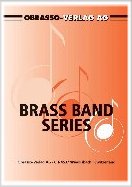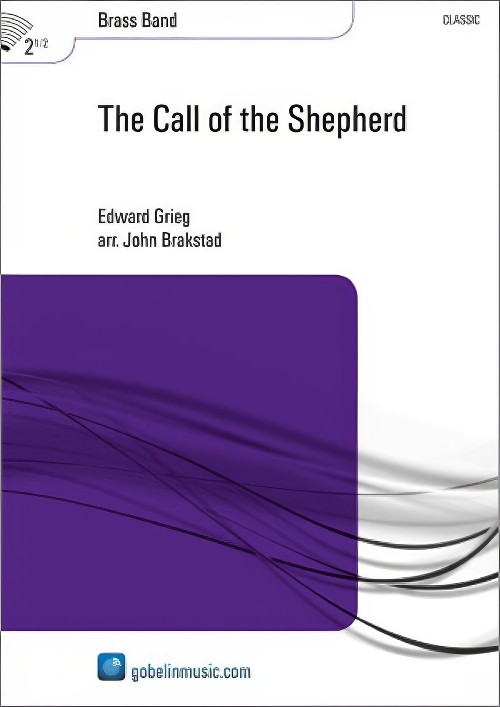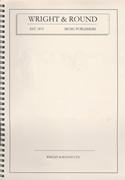Results
-
 £78.40
£78.40SARAJEVO (Brass Band) - Voegelin, Fritz
Symphonic poem for Brass Band. Grade: Advanced.
Estimated dispatch 7-14 working days
-
 £69.95
£69.95SIMON CALLED PETER (Brass Band - Score and Parts) - Vinter, Gilbert
Rhapsody for Brass Band. Duration: 9:14 Recorded on Polyphonic QPRL068D Triumphant Rhapsody
Estimated dispatch 7-14 working days
-
 £32.95
£32.95SIMON CALLED PETER (Brass Band - Score only) - Vinter, Gilbert
Rhapsody for Brass Band. Duration: 9:14 Recorded on Polyphonic QPRL068D Triumphant Rhapsody
Estimated dispatch 7-14 working days
-
 £60.99
£60.99Soul Time (Brass Band - Score and Parts)
Soul Time by Roland Kernen has the two most important elements of any hit pop song - a driving rhythm and an attractive and catchy melody. This work has a three-part structure - a lively and exciting opening, a more peaceful middle section and an exuberant reprise. Get into the groove with this soulful work for brass band. 03:43
Estimated dispatch 7-14 working days
-
 £18.99
£18.99Soul Time (Brass Band - Score only)
Soul Time by Roland Kernen has the two most important elements of any hit pop song - a driving rhythm and an attractive and catchy melody. This work has a three-part structure - a lively and exciting opening, a more peaceful middle section and an exuberant reprise. Get into the groove with this soulful work for brass band. 03:43
Estimated dispatch 7-14 working days
-
 £25.00
£25.00SYMPHONY FOR BRASS (Brass Band Extra Score) - Ewald, Victor - Hopkinson, Michael E.
Score only. 2014 National Championships finals - Third Section.
Estimated dispatch 7-14 working days
-
 £49.50
£49.50SYMPHONY FOR BRASS (Brass Band Set) - Ewald, Victor - Hopkinson, Michael E.
Score and Parts. 2014 National Championships Finals - Third Section.
Estimated dispatch 7-14 working days
-
 £60.99
£60.99The Call of the Shepherd (Brass Band - Score and Parts) - Grieg, Edvard - Brakstad, John
A warm, romantic pastorale, very suitable as calm interlude in your program. John Brastad, band master of the Bergen Salvation Army Band (Norway) made the arrangement for brass band.Duration: 3:15
Estimated dispatch 7-14 working days
-
 £54.99
£54.99Theme from JAG (Brass Band - Score and Parts)
The television series JAG (Judge Advocate General), which was first broadcast in America in 1995, has become internationally known over the years. In Europe, too, people have become acquainted with the legal wing of navy officers and the intrigues surrounding Commander Harmon "Harm" Rabb (David James Elliott) and his partner Lieutenant Colonel Sarah "Mac" MacKenzie (Catherine Bell). Both inside and outside the courtroom they fight with one major aim: winning! In their personal relationships, there's a good deal of tension too. The theme tune to this television series, full of action and adventure, has been arranged for brass band by Roland Kernen. 02:00
Estimated dispatch 7-14 working days
-
 £40.00
£40.00Three Impromptus for Brass Band (Brass Band - Score and Parts)
-
Estimated dispatch 7-14 working days
